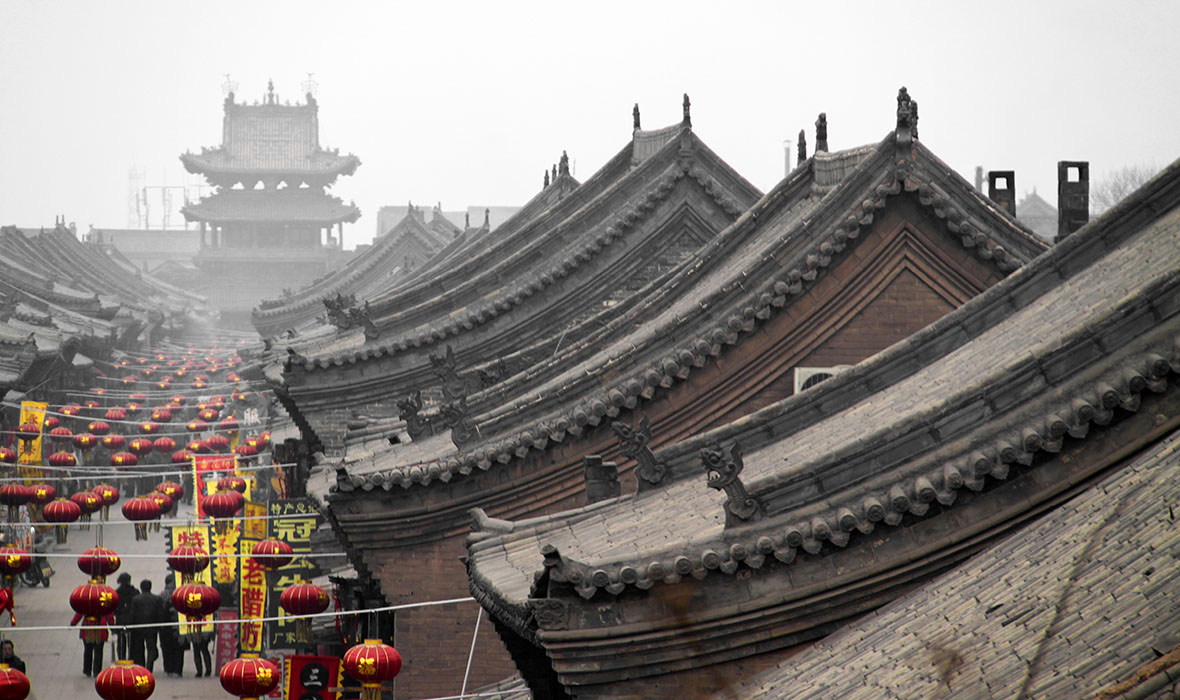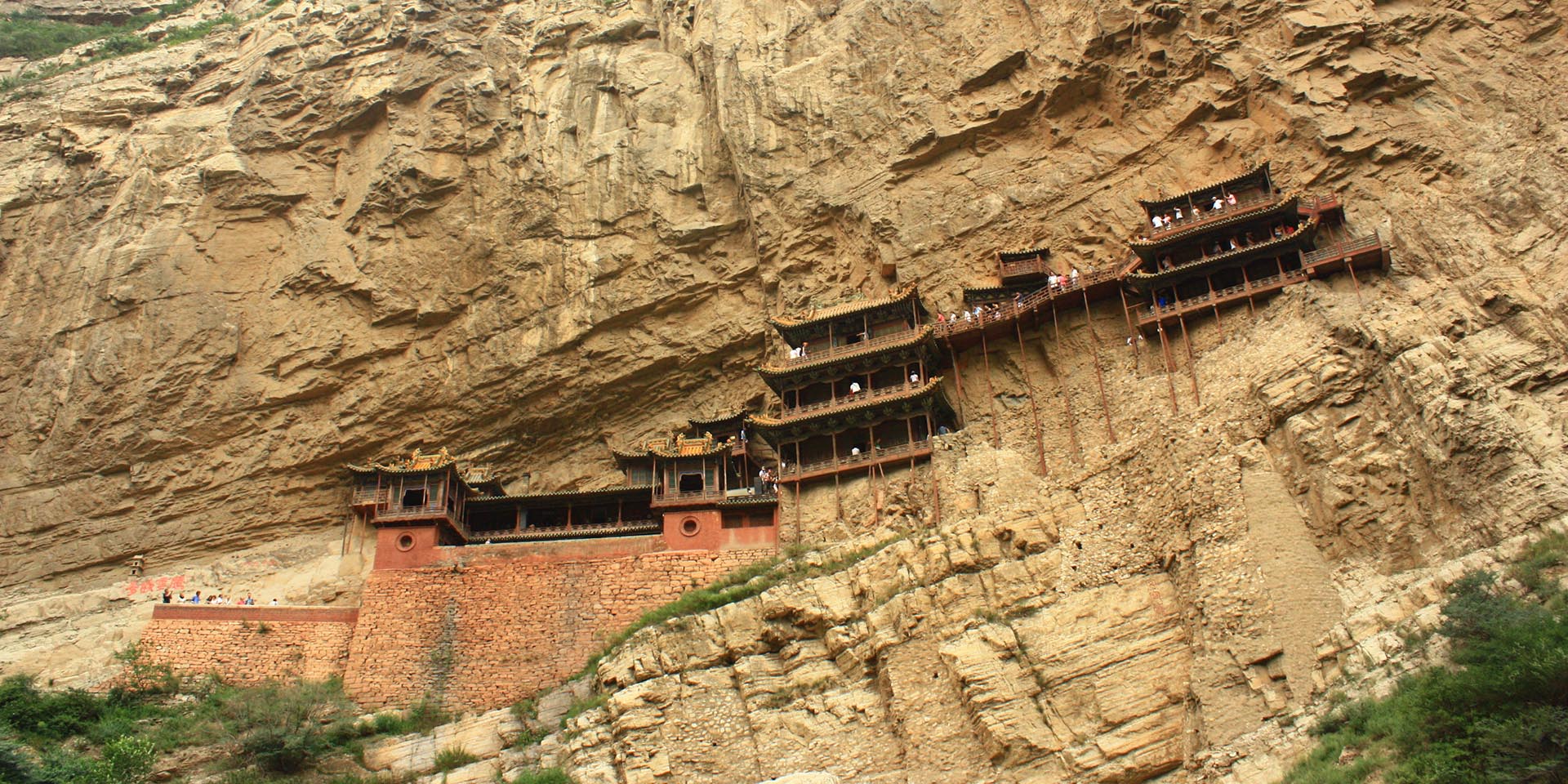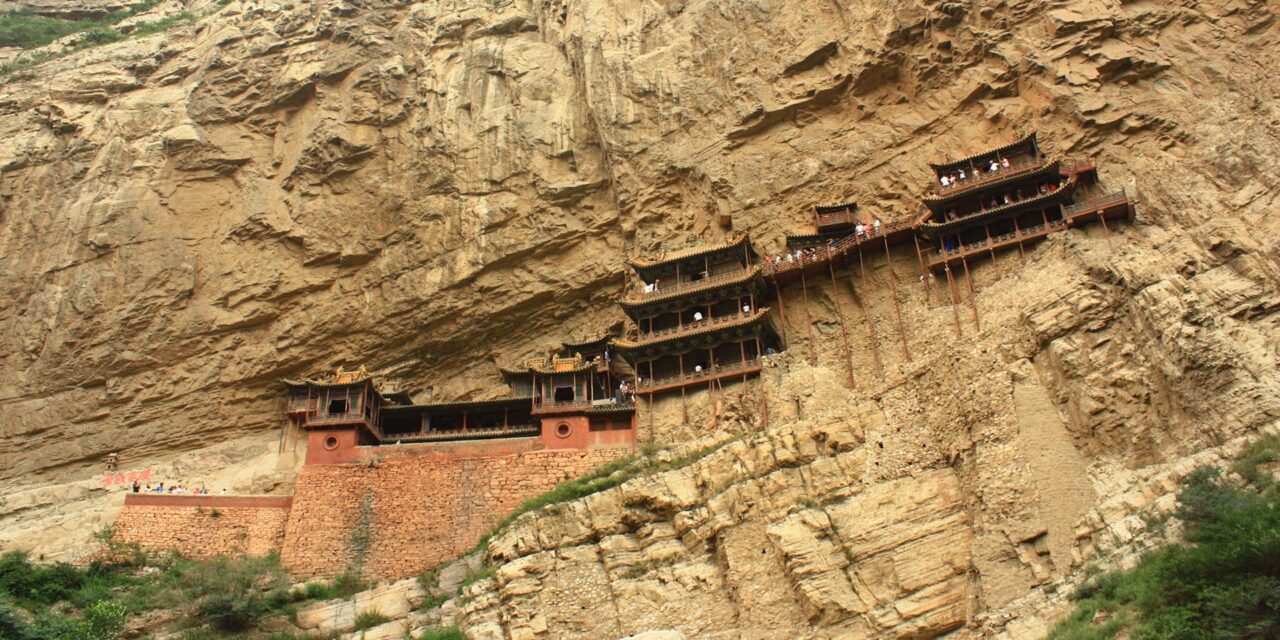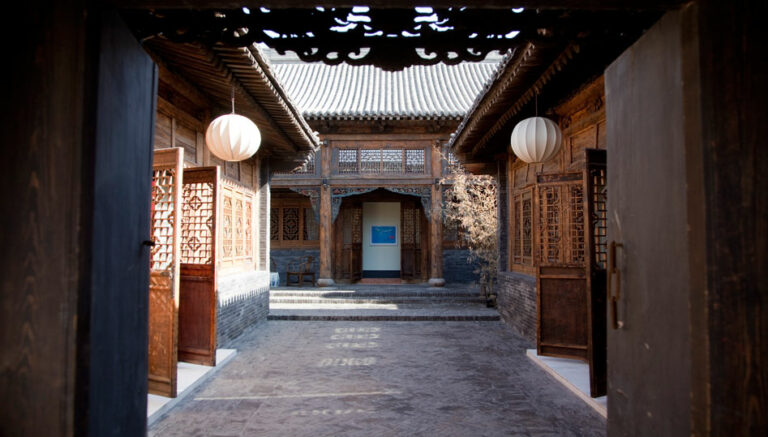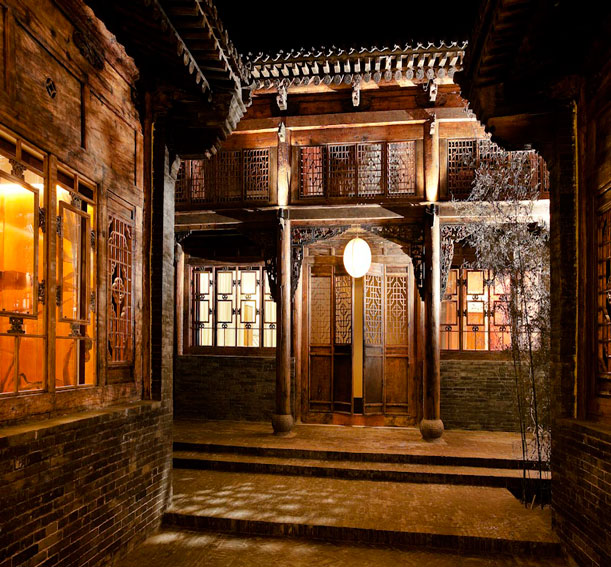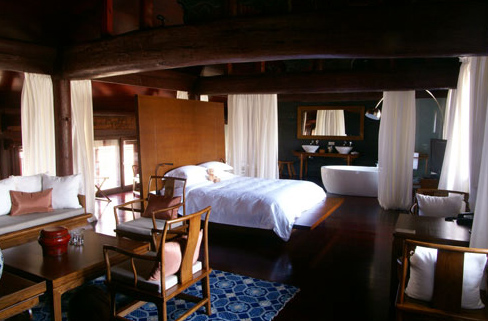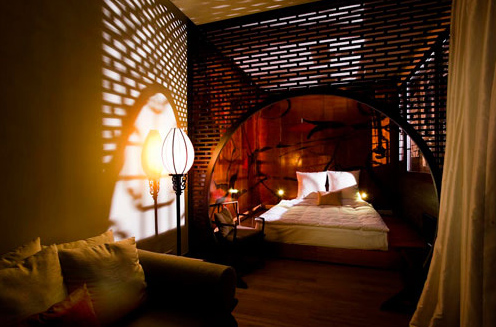WRITTEN BY
Editor, Travelogues
PUBLISHED
October 12, 2017
LOCATION
China
Between the metropolis of Beijing and the southern reaches of Inner Mongolia lies Shanxi Province. From cliff-side temples to one of the holiest sites in Chinese Buddhism, the road from Datong to Pingyao is a cultural vein that has been running through China for millennia.
Along this crowded road, travelers can better get to grips with how one of the world’s greatest ancient civilizations became one of the planet’s most powerful nations.
Hanging Temple at Datong
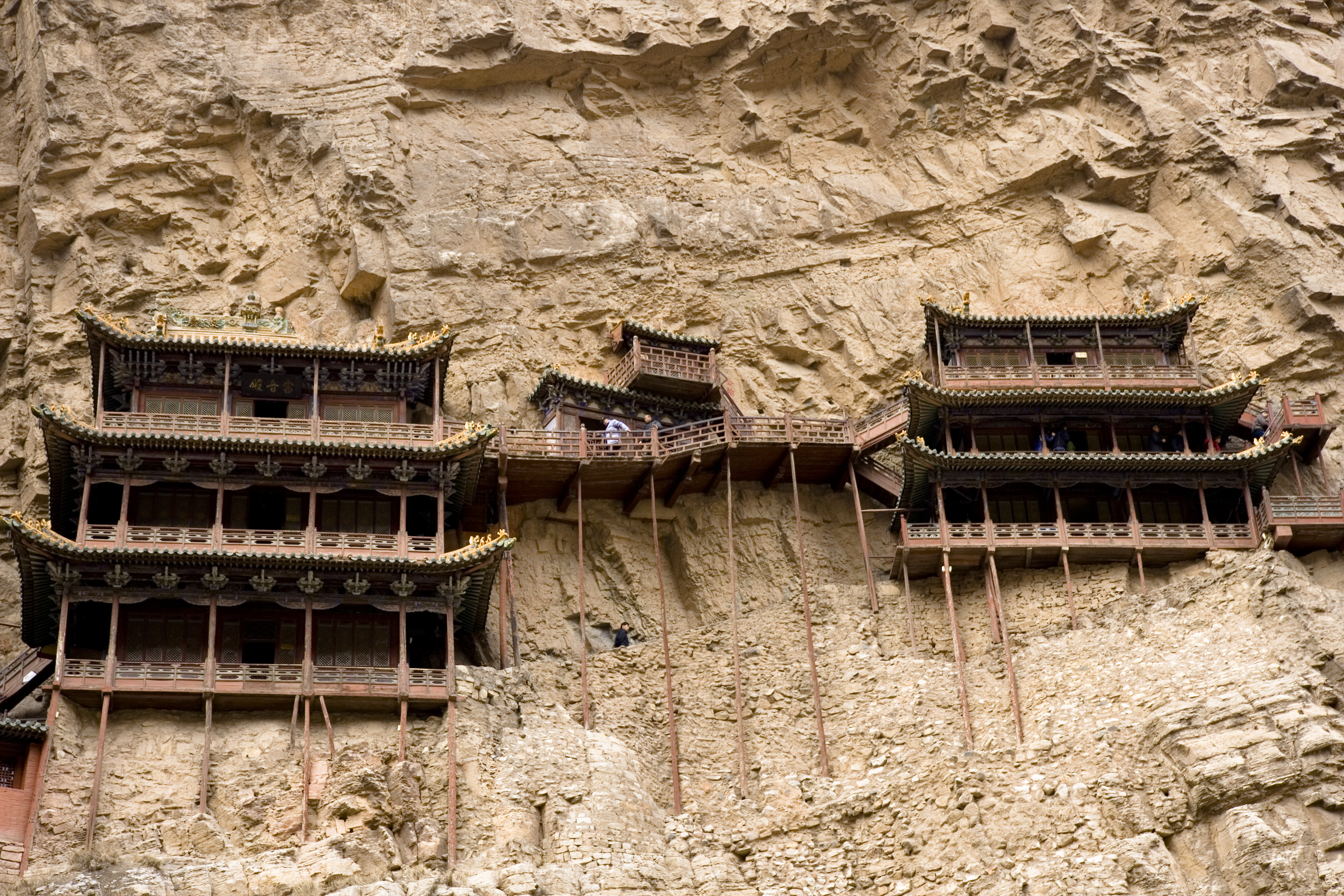
ABOVE: Hanging Temple at Datong, also known as the Hanging Monastery.
First, it must be said that, while we here at Remote Lands endeavor to present matters with our usual rose-tinted photography selections, all travelers should be warned that they are going through North China. There will most likely be smog. For travel seasons, winter is the worst for air pollution, spring is the best.
Datong, the second largest city in the Shanxi province, boasts two of China’s most impressive religious attractions, the Yungang Grottoes and the Hanging Temple. To begin the journey through Shanxi, a first stop should be spent with the UNESCO World Culture Heritage Site at the Yungang Grottos. Precious and vivid, these statues are representative of the development of art, architecture, dating back 1,500 years.
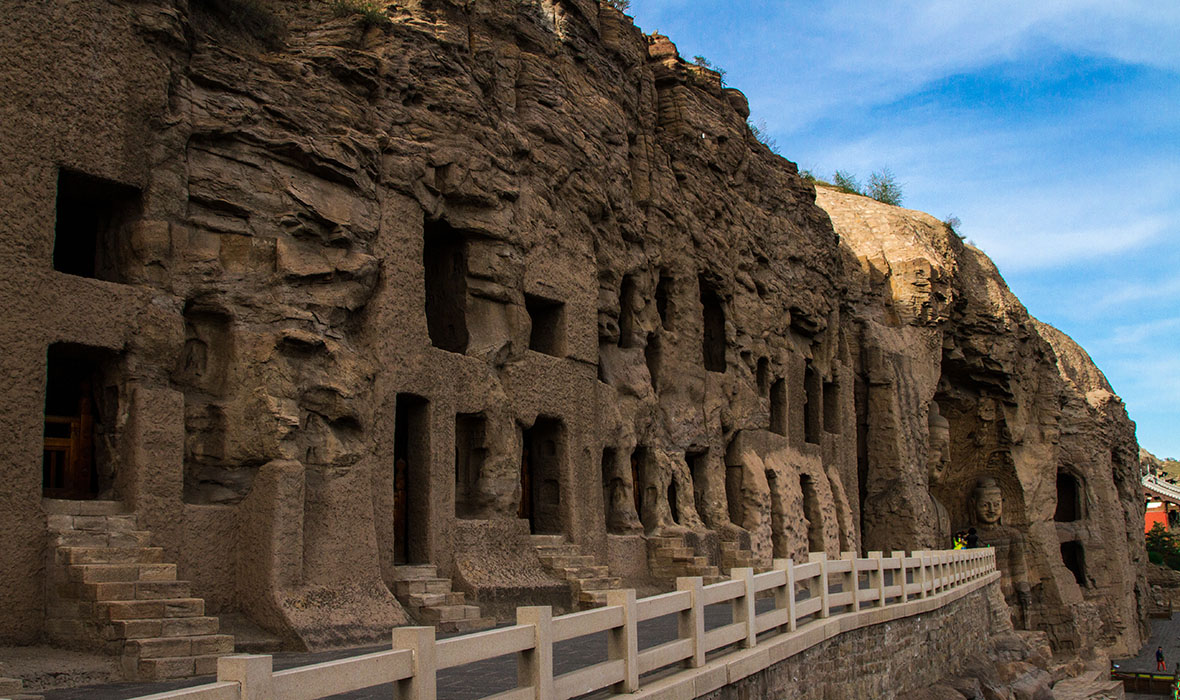
ABOVE: Entries to the Yungang Grottoes.
The intricate clusters of Yungang Grottoes were inspired by Indian Gandhara Buddhist art during the Northern Wei Dynasty and have retained their original appearance through daily maintenance and careful conservation.
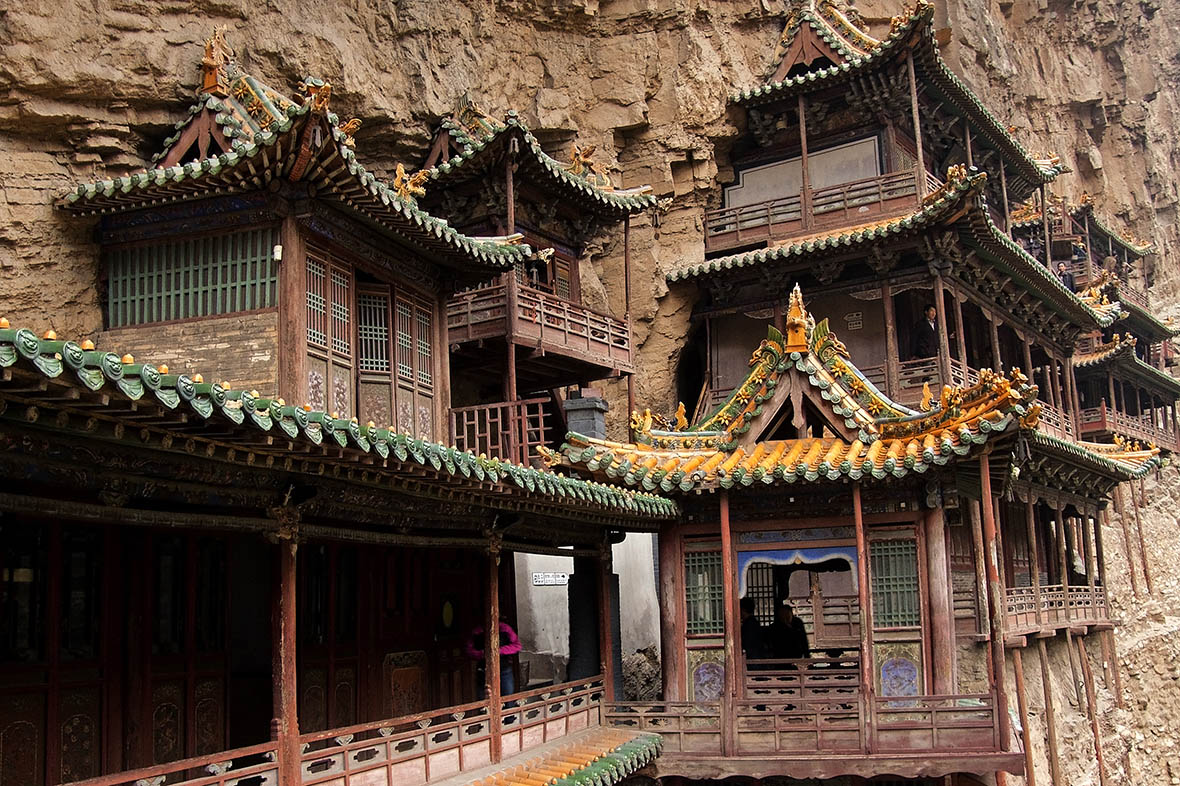
ABOVE: Closeup of the Hanging Temple, suspended 75 meters in the air by oak beams.
Next on the list should be the highlight of Datong on the short drive to Mount Hengshen: the Hanging Temple. Legend has it that the Hanging Temple, or Hanging Monastery, was originally built by a single person in the Northern Wei dynasty of the 4th century. Oak beams deep into the cliff keep this architectural marvel 75 meters above the ground.
Travelers should be warned, however, that the climb can be slightly trying and it can be, well, terrifying. Built on wooden stilts stuck into the cliff face, the floors shake underfoot.
Sacred Mount Wutai
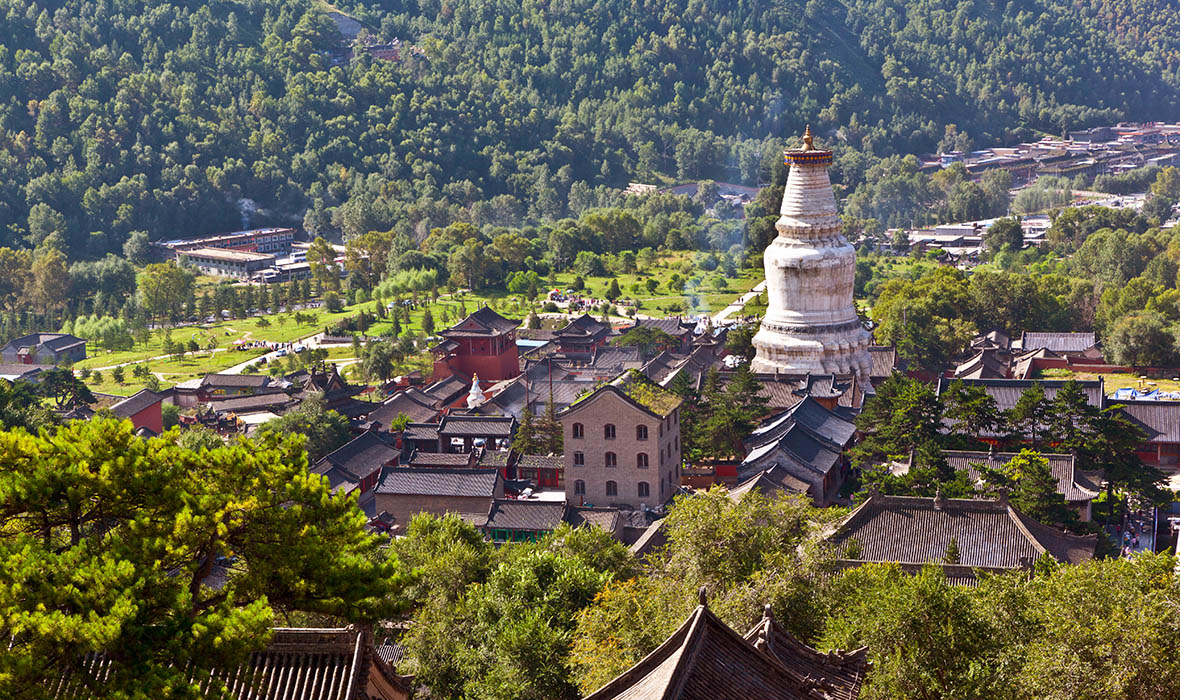
ABOVE: Mount Wutai is one of the most sacred mountains in Chinese Buddhism.
Nature lovers will want to head east for a look at Mount Wutai and a stay at the Wutai Mountain Marriot Hotel. Mount Wutai is one of the Four Sacred Mountains in Chinese Buddhism, and it’s said that long gone bodhisattvas take the form of travelers and monks to speak with passersby.
The Wutai Mountain Marriott Hotel, featuring high-end amenities and local and international culinary delights from their two restaurants and lounge, is in the south east of the Wutai Mountain Scenic Area.
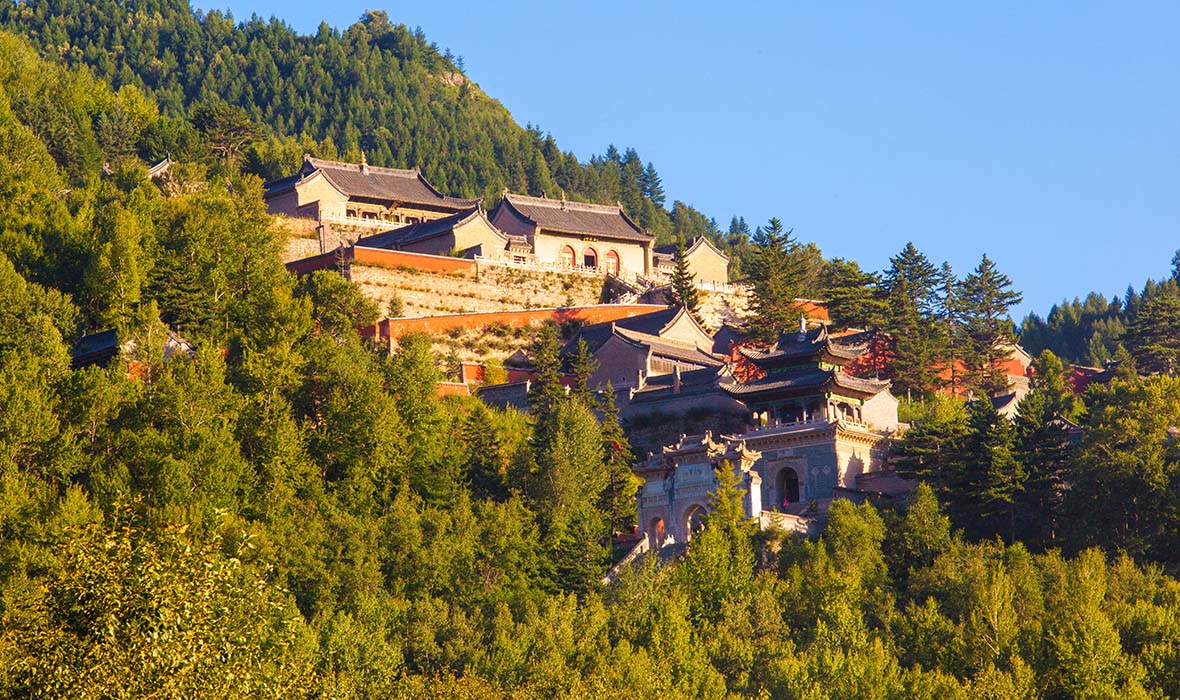
ABOVE: Nanshan Temple in Wutai Mountain National Park.
Local entertainment includes the “Encore Mount Wutai” live show in the theater next door, meandering the generally uncrowded and non-touristy city center, and sight-seeing around the area’s temples. Before leaving, travelers should visit the symbolic Great White Pagoda, a 164-foot-tall brick stupa constructed during the Ming Dynasty and located at the base of Mount Wutai.
Pagodas at Taiyuan
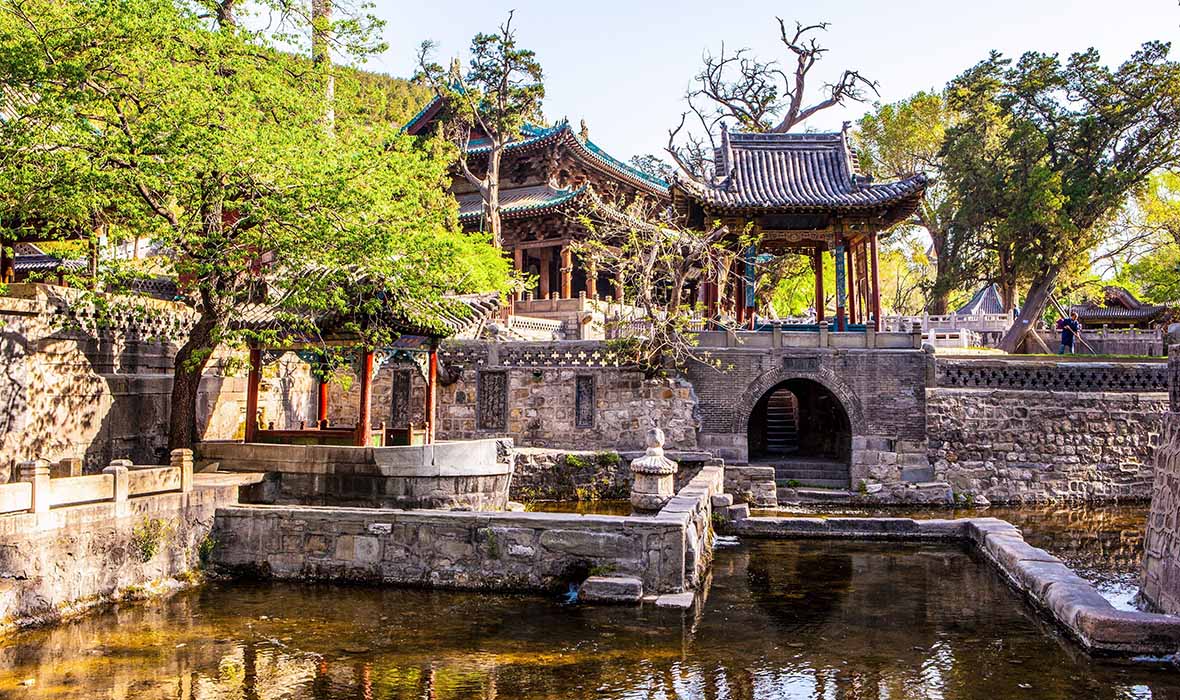
ABOVE: The Nanlao Spring at the Jinci museum southwest of Taiyuan.
For a little city living and Chinese history, travelers will then want to head for Taiyuan, the largest city in and capital of Shanxi Province. Truth be told, Taiyuan isn’t the most beautiful city and can often seem like your bog-standard third-tier Chinese town.
But, there’s a history that stretches back over 2,500 years. For more than a thousand years, Taiyuan was one of the most important cities in the world, the key to north China. The Jinci Temple south of Taiyuan is composed of large-scale memorial temple gardens, ancient sculptures, and pavilions surrounded by streams of running water, ancient trees, and mountainous terrain.
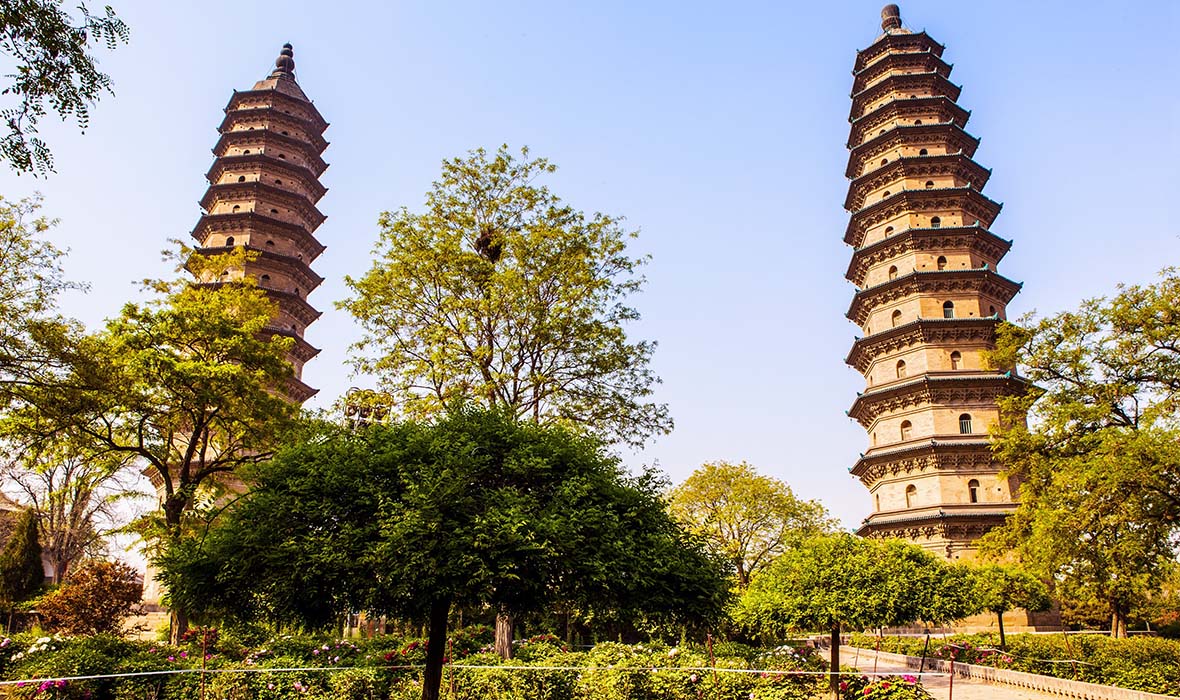
ABOVE: Twins pagodas in Taiyuan, built in the Ming Dynasty and standing 55 meters.
For cuisine, Taiyuan is best known for its sliced, hand-pulled noodles, with the famous Fudong Street an ideal place to marvel in the authentic, chewy noodle dishes served with thick gravy and vegetables.
A quick cab downtown lead’s to the impressive – though underwhelming on a smoggy day – Twin Pagoda Temple. Used by Kuomintang troops during the Civil War, this temple contains around 260 stone steles, vast gardens, and a forest of peony trees dating back to the Ming dynasty. No, Taiyuan isn’t the most beautiful city in Shanxi, but it is perhaps where one can revel most in the atmosphere of a North China city, a mountain of history in an otherwise inconsequential city.
Ancient City at Pingyao
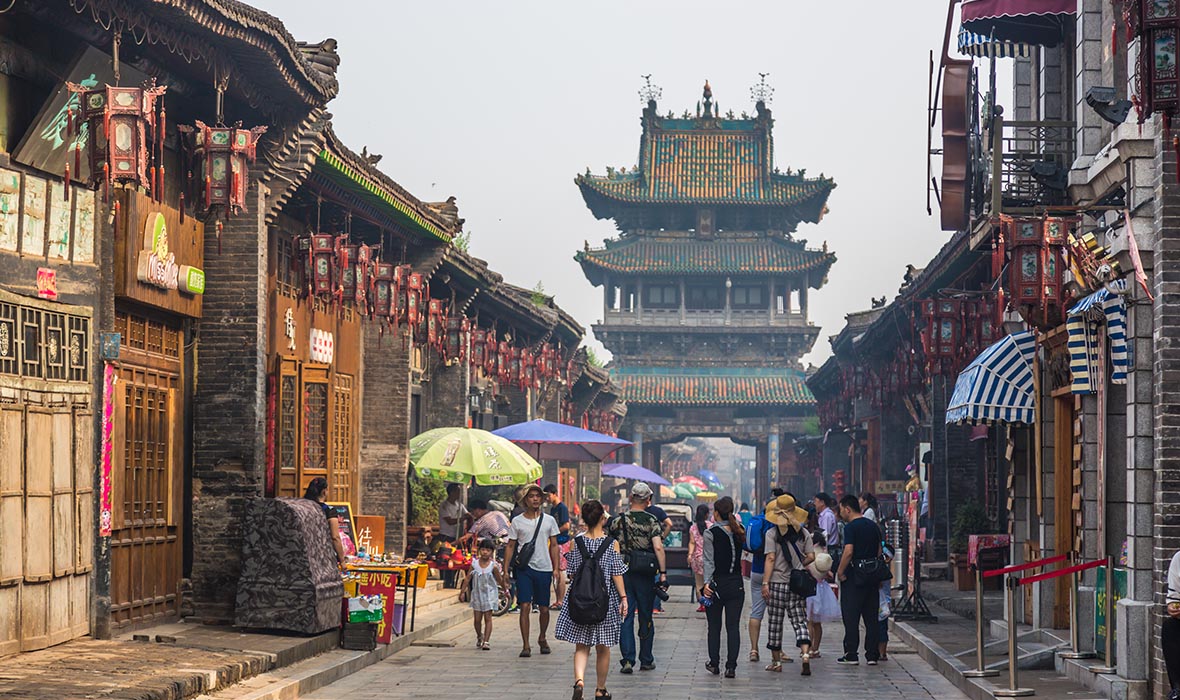
ABOVE: Busy streets in the ancient city of Pingyao.
Jumping back on the G55 leads to the final destination through Shanxi: Pingyao. Pingyao itself is a UNESCO world heritage site, one of only two such cities in China. The city wall – featuring six barbican gates and built in the 14th century – is in the shape of a turtle, which is why it’s sometimes called “Turtle City” in Chinese.
The history in Pingyao never ends: China’s first banks, visits from Dowager Cixi, and today only about 40,000 residents still call Pingyao home.
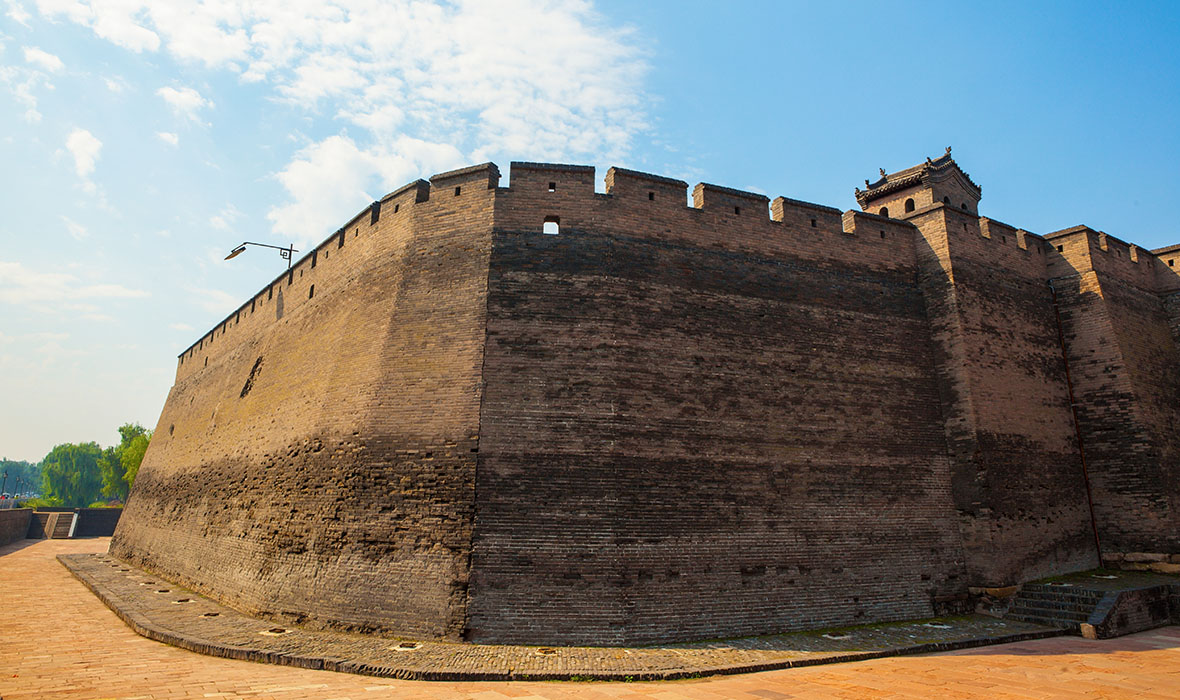
ABOVE: Wall of the ancient city of Pingyao.
Visitors might want to head straight to the Pingyao Ancient City to view the Wang Family Complex. This residential site was built in the 18th century and covers almost 150,000 square meters, today a museum of architectural art. After walking through the grounds, one may want to take in the history and hullabaloo of Ancient Ming Qing Street for old brick-and-stone residences and shops selling souvenirs and authentic local cuisine.
ABOVE: Rooms and exterior of Jing’s Residence, the converted mansion of a silk merchant.
As it pertains to accommodations, travelers will be pleased to learn that Pingyao has something a bit above the normal offerings in Shanxi. Jing’s Residence is a boutique hotel in Pingyao’s old, walled city made from a restored mansion. The hotel is a piece of history, built more than 260 years ago by a Qing Dynasty silk merchant.
With that, visitors can move east to the Middle Kingdom’s great cities or west to deserts and plains, perhaps south to the Terracotta warriors of Xian. China is many things on the road – dirty, complicated, delicate – but at the end of every trip, it always seems too big.
